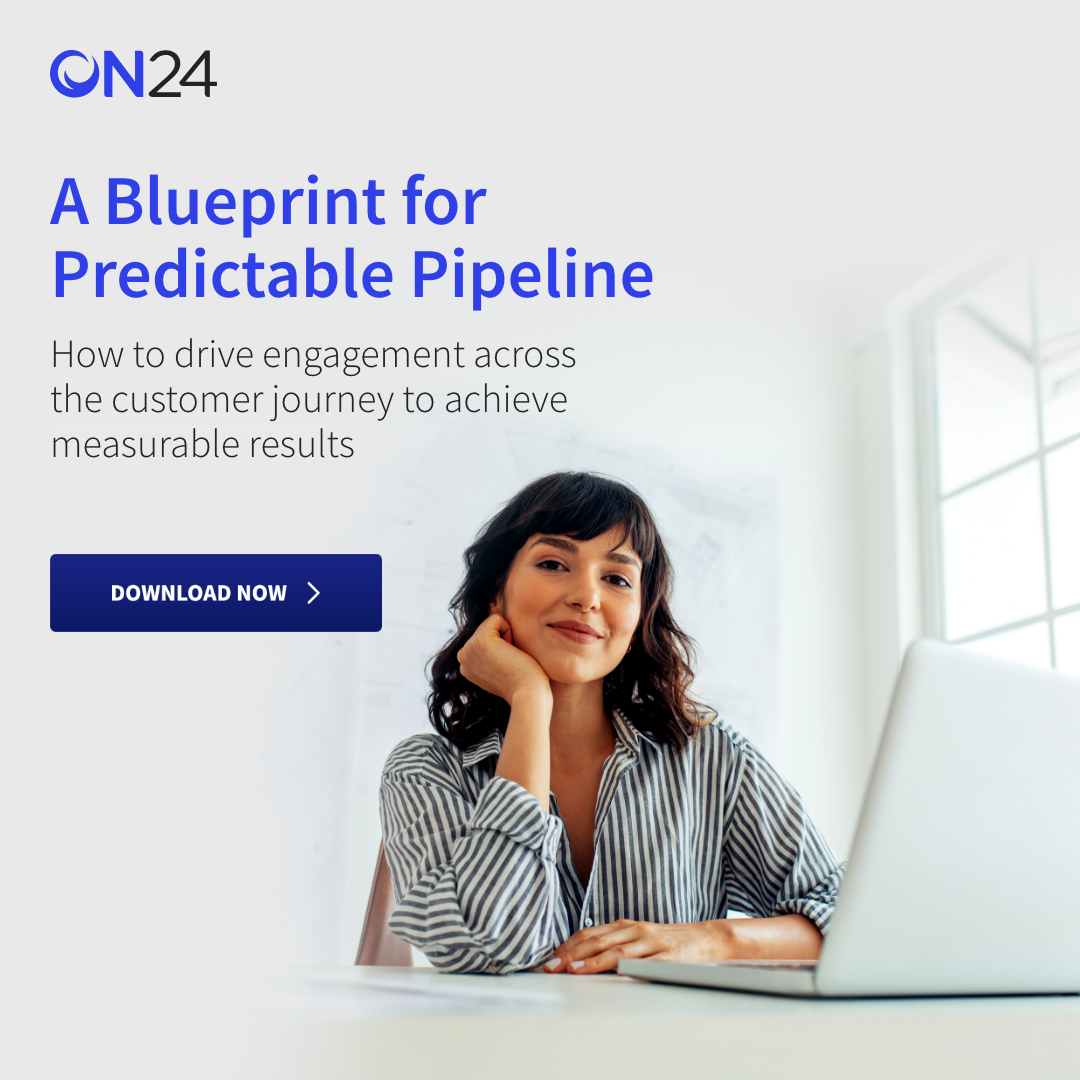You’ve got a packed webinar and impressive attendance numbers. So why aren’t those leads converting? The truth is, traditional metrics like registration and attendance only tell part of the story. To uncover buyer intent, you need to focus on engagement signals – the measurable interactions that show how interested someone really is.
Engagement signals, like poll responses, click-through rates on calls-to-action and Q&A conversations, reveal who is interested and help both marketing and sales to prioritize follow-up efforts.
Let’s explore how shifting your focus from lead quantity to engagement quality can transform your sales pipeline.
How Traditional Webinar Metrics Fail on Buyer Intent

Traditional webinar metrics, while useful for assessing the overall health of a webinar or webinar program, fall short when it comes to measuring buyer intent. For example, many marketers and sales teams use registration and attendance rates as indicators of success. However, high attendance rates don’t always translate to high conversion rates, and this is where traditional webinar metrics fail to provide a comprehensive picture of buyer intent.
To understand a prospect’s interest and readiness to buy, you must examine how they engage with your content. Interactive elements, like poll responses, resource downloads and live chat, can provide valuable first-party data and intent signals. You can get even more insight when a prospect returns and engages with your content on-demand, whether that’s through a content hub, nurture page or an always-on webinar.
These moments — from live engagement to on-demand content consumption — can provide insights into the audience’s specific pain points and needs, which, in turn, can help your sales team effectively follow up with prospects.
The Task: Shift from Lead Quantity to Engagement Quality

The key to success today lies in shifting focus from the quantity of leads to the quality of engagement. To make this shift, you need to reevaluate the metrics you use to measure the success of your webinars. For example, instead of evaluating a webinar’s success based on registration to attendance rates, start tracking how many questions attendees ask, how many responses your polls and surveys elicit and how many clicks any webinar-based CTAs get.
By measuring how attendees engage with your content, you can understand what motivates your prospects and assess the overall quality of your webinars and your leads.
With this holistic perspective, you can get a clearer picture of which leads are most interested in your offerings and ready to move forward in the sales process.
How Real-Time Data Identifies Sales-Ready Prospects

Leveraging real-time, or near-real-time, data helps identify promising prospects and gauge their level of interest and openness to continuing a conversation with sales.
There are a variety of ways you can capture these signals. A live chat during an event, for example, is a good indicator of interest. So are clicks on “hand-raiser” CTAs — links and features that provide an attendee with a direct line to a sales representative.
Automated alerts are another way to notify your sales team of buyer activity, helping you to optimize the efficiency and relevance of follow-up. For example, if a prospect revisits the pricing page multiple times within a short period, it’s a strong signal of interest.
Similarly, those actively participating in Q&A sessions during webinars could demonstrate heightened interest and intent. By monitoring and engaging with these interactions in real time, your sales team can focus on promising leads, effectively expediting the sales cycle.
How to Score, Prioritize and Route Leads

To effectively score leads, you need to establish a clear set of criteria based on prospects’ and customers’ actions. Form fills, live chat interactions, and content downloads are all strong indicators of interest and engagement.
Each action can be assigned a score, with higher scores indicating greater interest. For example, a lead who downloads a whitepaper and then returns later to engage in a live session with a chatbot might receive a higher score than one who only fills out a form. This scoring system helps you qualify leads and prioritize follow-up efforts, ensuring your sales team is focused on quality opportunities.
Developing a lead scoring and qualifying matrix is a complex process involving both marketing and sales teams. Both teams have valuable metrics and insights into what constitutes a worthwhile lead, what an Ideal Customer Profile looks like and what activities help drive engagement with target audiences. Both teams should discuss and define these terms and metrics and work with operations teams to implement their measurements on Marketing Automation Platforms and Customer Relationship Management tools — ideally, scoring is automated.
Automating this process can further enhance your sales efforts. By setting up automated lead routing, you can ensure that each lead is directed to the sales rep who is best equipped to handle their specific needs and pain points. This alignment accelerates the buying process and improves the overall customer experience.
Sales Acceleration Scenarios with Engagement Signals

Let’s consider some practical examples where engagement signals have been the catalyst for expediting sales cycles and yielding substantial outcomes. Imagine a B2B technology enterprise that regularly conducts webinars to enlighten potential clients about its offerings. Traditionally, the company gauged success by the number of attendees and the duration of their participation. However, these metrics often fell short of capturing the genuine buying intent of the audience. By redirecting their focus to engagement signals, such as the number of questions posed during the Q&A, the frequency of revisits to specific slides, and the level of interaction in the chat, the company could pinpoint high-intent prospects with greater precision.
Here is a table of example engagement signals and their associated score:
| Engagement Signal | Score |
| Webinar Registration | 1 |
| Webinar Attendance | 2 |
| Poll Participation | 3 |
| Content Download | 1 |
| Chat Interaction | 2 |
| Q&A Participation | 2 |
| CTA click | 5 |
Your sales reps can now prioritize leads based on first-party data, significantly improving follow-up and conversion rates. For instance, when a prospect shows high engagement by asking multiple questions and revisiting key slides, they are flagged as a high-priority lead. This prioritization allows your sales teams to reach out to these prospects while their interest is still hot, leading to more meaningful and productive conversations. The result? A more efficient sales process and a higher likelihood of converting leads into customers.
Let’s illustrate how this would work. Let’s say a fictional B2B tech company wanted to reduce its lead-to-sale time by using the ON24 Intelligent Engagement Platform and its integrations to detect and act on high-intent engagement signals to score and route leads. This company had a strong webinar program with high attendance, but it lacked visibility into which attendees were actually ready to buy. Traditional metrics couldn’t distinguish between causal viewers and serious prospects, so they needed a better way to understand audience behavior.
They began hosting webinars and on-demand experiences through ON24, which automatically captured and detailed engagement data — things like live Q&A participation, resource clicks, time spent on specific slides and return visits to content hubs. All of this first-party data was centralized in the platform’s analytics dashboard, demonstrating how ON24’s customer engagement software can provide real-time visibility into audience behavior.
From there, they synced this data into their CRM using ON24’s native integrations, allowing them to build an automated lead scoring system based on real behavior. Once integrated, this data helped inform lead prioritization and routing through their existing marketing and sales tech stack.
They also used ON24’s Analytics and Content Engine (ACE) to personalize the experience within the platform — serving relevant content to attendees based on their actions and interests during the webinar. This made the experience more engaging in real time and encouraged deeper exploration of related resources.
By aligning follow-up strategies with each prospect’s unique interests and behaviors, the company could see a significant improvement in lead conversion rates.
Take The Next Step

Strategically implementing engagement signals within your webinar marketing program can revolutionize your business’s marketing approach. By prioritizing engagement quality over mere lead quantity, you can expedite sales cycles, enhance conversion rates, and boost revenue. The crux is to harness the potency of real-time data and customize follow-up actions to a prospect’s specific needs and interests.
Click here to learn how the ON24 Intelligent Engagement Platform can help you in your journey.





